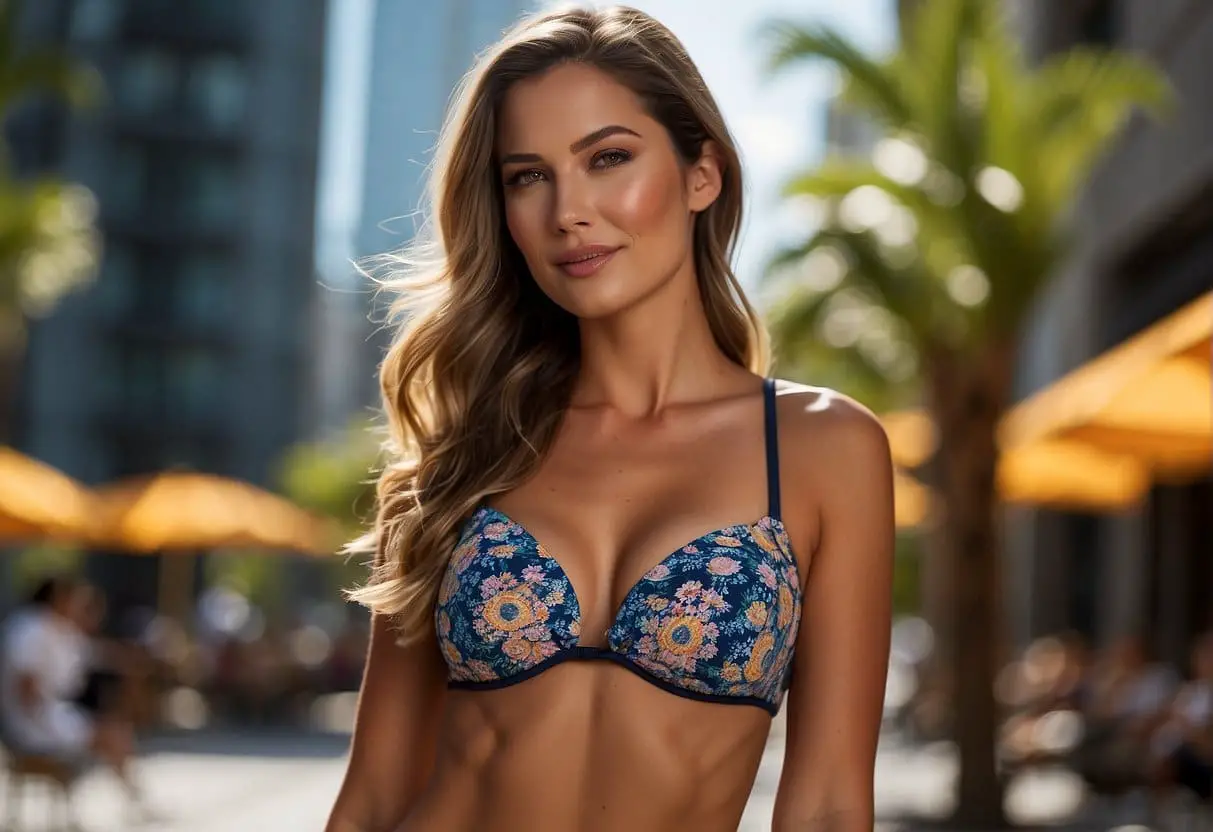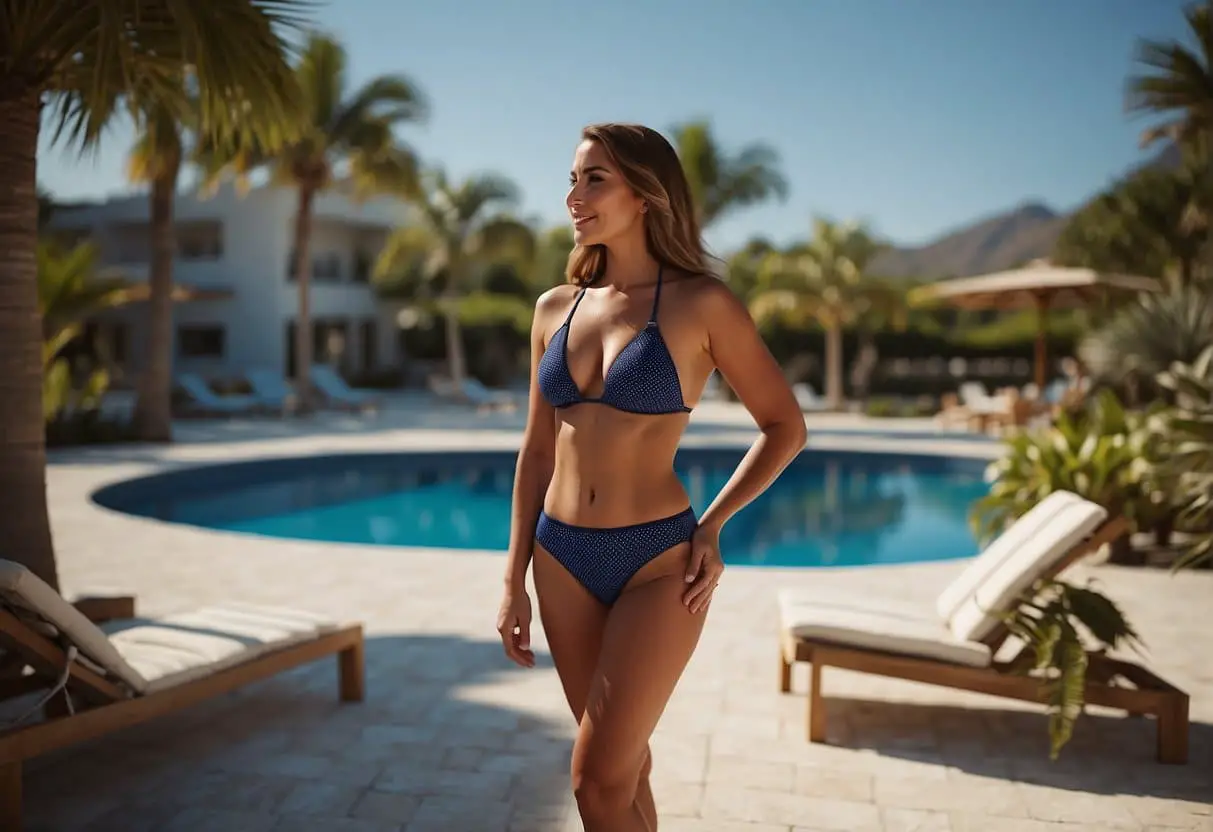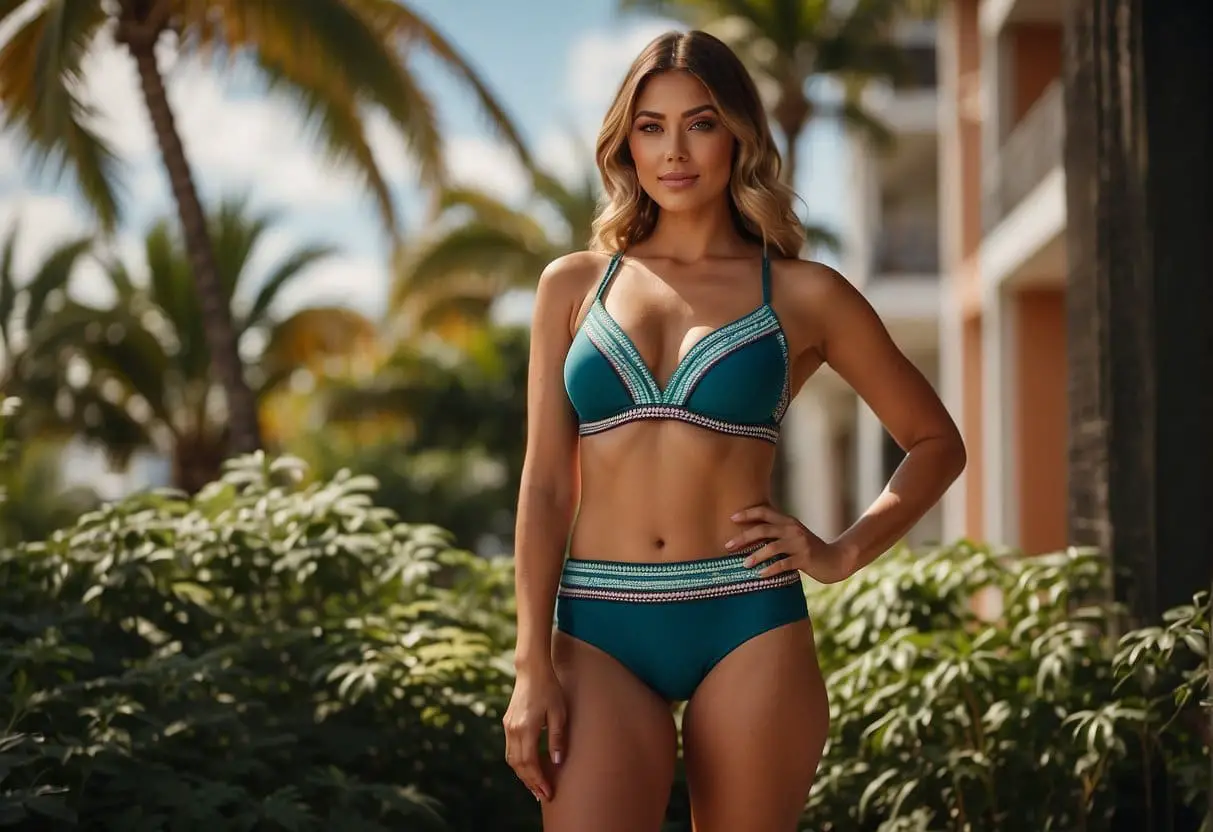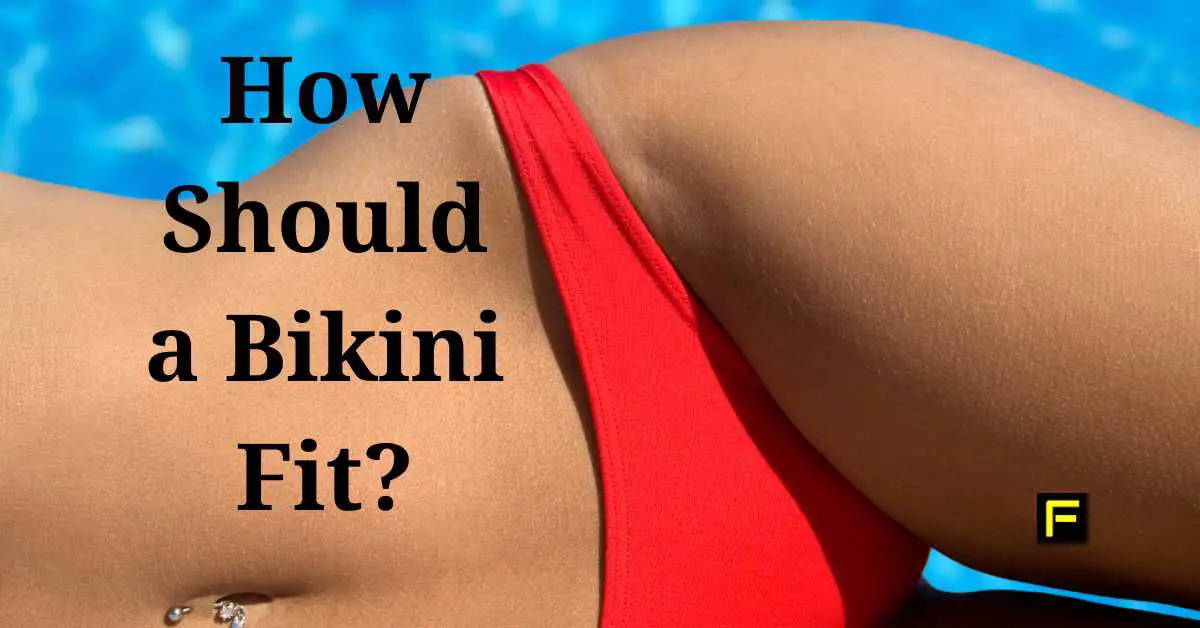Selecting a well-fitting bikini is crucial not just for aesthetic appeal but also for ensuring comfort, confidence, and adequate support while you’re enjoying your time by the pool or on the beach. A bikini that fits properly will stay in place and flatter your body shape, allowing you to move freely and feel secure in your swimwear. To achieve this, it’s essential to find the right size and fit, which involves considering not only the size chart but also the unique contours of your body.

The perfect style of a bikini can vary greatly from person to person, as it should complement individual body types and personal preferences. Additionally, the material of the bikini plays a significant role in how it fits and feels. Quality fabrics that offer stretch and durability are key to a bikini that maintains its shape and provides comfort throughout wear. Staying informed about how to choose the right bikini can lead to a more enjoyable experience whether you’re swimming, sunbathing, or participating in beach sports.
Key Takeaways
- A bikini that fits properly enhances confidence and allows for worry-free movement.
- Selecting the right material contributes to both the comfort and longevity of the swimwear.
- Choosing a style that suits one’s body type is pivotal for both support and a balanced look.
How Should a Bikini Fit
Finding the Right Size and Fit

Choosing the right bikini involves understanding sizing and ensuring proper measurements for a fit that is not only comfortable but also flattering for your body shape. The perfect bikini should provide a balance of support and style, with bikini tops and bottoms that stay secure and comfortable.
Understanding Bikini Sizing
Size is a crucial aspect of selecting a bikini, as it directly affects the fit and comfort. Most brands offer a sizing chart to help determine the appropriate size. Bikini sizes typically range from extra small to plus sizes, and consumers should refer to these charts for guidance. A properly sized bikini top should offer a snug band fit without digging into the skin, while bikini bottoms should provide coverage without squeezing or causing discomfort.
Importance of Proper Measurements
Before one can choose their ideal bikini, they must have accurate body measurements. To ensure the best fit, individuals should measure their bust, waist, and hip sizes. These measurements can then be matched with a brand’s specific sizing chart. It is crucial to use a flexible measuring tape and to measure the fullest part of the bust and hips, as well as the narrowest part of the waist.
Adjusting for Different Body Types
Every body is unique, and understanding one’s body shape is instrumental in finding a bikini that fits well. Different styles cater to various shapes, whether one has a pear, apple, hourglass, inverted triangle, or rectangle silhouette. For example, individuals with a pear-shaped body might choose high-waisted bikini bottoms to emphasize their waist, while those with an apple shape could opt for ruched bikini tops to provide extra support. It is important to find a bikini that feels both comfortable and secure, adjusting for personal body type and preference.
Selecting the Perfect Style

When it comes to beachwear, finding the right bikini is all about balance – considering the design that flatters your shape while providing the desired level of coverage and support. In this section, we’ll guide you through the nuances of selecting the ideal bikini tops and bottoms, and introduce you to some innovative styles tailored for added comfort and support.
Bikini Tops for Every Bust
Selecting a bikini top is more than just choosing a pattern; it’s about finding the right fit for your bust. Individuals with smaller busts may opt for triangle bikini tops which can offer a flattering look, or bandeau styles that provide a seamless tan line. For those requiring more support, underwire tops or tankini tops with built-in cups offer both style and ample coverage.
Choosing the Right Bottoms
The fit of bikini bottoms is crucial for comfort and confidence. High-waisted bottoms can provide more coverage and can be a stylish nod to retro fashion. For a daring yet popular choice, cheeky bikini bottoms offer minimal coverage and can accentuate your curves. Ensure that the bikini bottom fits snugly without digging into the skin to avoid discomfort or unsightly bulges.
Innovative Styles for Added Comfort and Support
Recent years have seen the advent of bikinis that combine fashion with functionality. New materials and designs aim to provide extra support without sacrificing style. Features like adjustable straps, lined cups, and innovative clasps can make a significant difference in fit, especially for those with a fuller bust seeking both support and coverage.
Material Matters

Choosing the right material for a bikini is crucial as it greatly affects both the comfort and longevity of the swimwear.
Fabric Types and Benefits
Nylon and Lycra are two popular fabrics used in bikini manufacturing. Nylon is prized for its strength and durability, making it an ideal choice for swimwear that endures frequent use. It is also quick-drying, which adds to the comfort and convenience post-swim.
Lycra, often known as spandex, is renowned for its exceptional elasticity. Bikinis made with Lycra content allows for greater flexibility and freedom of movement, ensuring a snug yet comfortable fit that adapts to different body shapes.
- Nylon: Durable, Fast Drying, Strong
- Lycra: Flexible, Comfortable, Shape Retentive
Durability and Care
When it comes to caring for bikini fabrics, proper maintenance can significantly extend their lifespan. Both nylon and Lycra bikinis should be rinsed in cold water after use to remove chlorine or salt. However, they differ slightly in care:
Nylon:
- Avoid oil-based sunscreens which can deteriorate the fabric.
- Air-dry away from direct sunlight to maintain color vibrancy.
Lycra:
- Use gentle detergents as harsh chemicals can break down the elasticity over time.
- Avoid high-temperature washing and drying as heat can reduce the fabric’s flexibility.
A bikini that incorporates both nylon and Lycra combines the strengths of both fabrics: the resilience and quick-drying property of nylon with the stretch and comfort provided by Lycra. It’s a synergy that provides wearers with both performance and comfort during their aquatic adventures.
Ensuring Comfort and Security

When selecting a bikini, the goal is to achieve a balance of comfort and security. A well-fitted bikini boosts confidence and allows for worry-free movement without the need for constant adjustments.
Adjustable Features for a Custom Fit
Adjustable straps are essential for a tailored fit. They allow the wearer to fine-tune the tension to avoid straps digging in, while ensuring that the bikini is snug enough to stay in place. Bikinis with adjustable shoulder straps enable a comfortable fit for various body types and can be tightened or relaxed as needed.
Top Adjustments:
- Look for styles with ties at the neck or back for a customizable fit.
- Clasps with multiple settings can accommodate fluctuations in size.
Bottom Adjustments:
- Side ties offer adaptability on bikini bottoms, preventing riding up or digging.
By actively seeking these features, one can ensure both comfort and peace of mind.
Avoiding Common Fit Issues
To avoid common fit issues such as tugging, bulging, or spillage, it is important to select the appropriate style and size.
Bikini Tops should:
- Encapsulate the bust without gaping or overflow.
- Provide support without being too tight.
Bikini Bottoms should:
- Cover sufficiently while allowing freedom of movement.
- Sit smoothly without creating unwanted lines or discomfort.
By paying attention to these details, they can confidently wear their bikini without fear of wardrobe malfunctions or discomfort.
Styling Tips for a Balanced Look
Creating a balanced look with swimwear is all about considering proportion and harmony in both colors and patterns. By carefully selecting swim separates and accessories, one can enhance their beachwear ensemble for both style and comfort.
Accessorizing with Swim Separates
When accessorizing, swim separates offer a versatile way to create balance in a bikini outfit. For example, a woman might pair a bold printed top with a solid-colored bottom to avoid overwhelming the look, or vice versa. This mix and match approach allows for personalization while maintaining a cohesive appearance. Separates can also include items such as sarongs or cover-ups, which can balance the bikini when moving between the surf and the sand.
Playing with Colors and Patterns
Choosing the right colors and patterns can significantly affect the overall balance of a bikini. Individuals should consider their personal preferences and what complements their skin tone while also being mindful of how certain colors and prints might interact. For example:
- Solid colors: These are versatile and can create a slimming effect; darker shades are typically flattering and can create a sleek silhouette.
- Patterns: Use patterns to draw attention to features one loves; stripes can elongate the body, while smaller prints can reduce attention to areas one might be self-conscious about.
One’s aim should be to achieve a harmonious look that reflects their personal style and complements their body shape.
Achieving Visual Harmony
Visual harmony in a bikini can be achieved by considering the balance of proportion and scale. One should strive for a look that highlights their best features without pushing boundaries too far. For instance, a more petite woman might avoid overly large prints that could overpower her frame. Instead, she could opt for medium-sized prints that accentuate rather than dominate. In terms of proportions, selecting a bikini cut that suits one’s body shape is imperative — high-waisted bottoms might be the key for someone seeking a bit of tummy control, creating a proportionate and elegant look.
Frequently Asked Questions
Selecting the perfect bikini involves understanding how it should fit your body. This section covers some of the most common questions to help ensure comfort and style at the beach or pool.
What are the signs that a bikini top is too small?
If a bikini top leaves red marks on the skin or causes any spillover around the edges, it’s likely too small. The fabric should lie flat without causing any discomfort or altering the natural shape of the bust.
How to determine if a bikini bottom is fitting properly?
Properly fitting bikini bottoms will stay in place without sagging or pinching. They should be snug but not cause any indentation on the skin.
What should I consider when deciding between sizing up or down for a bikini?
Bikinis typically stretch slightly when wet, so one should opt for a true-to-size or a size down to prevent sagging. However, never size up if you want a fit that stays snug in the water.
How do I choose the correct size for my bikini?
Measure the bust, waist, and hips with a tape measure to determine the correct size. Use sizing charts provided by manufacturers for the best fit. For more detailed guidance, checking the brand’s specific fitting tips, such as Wicked Weasel’s comprehensive fit guide, can be helpful.
Are there any tips for accommodating a swimsuit that feels too tight?
If a swimsuit feels too tight, ensure you’ve adjusted the straps and ties correctly. Some swimsuits have adjustable elements that can provide additional comfort without needing to change sizes.
What trends should I be aware of when selecting a snug or loose-fitting bikini?
Current trends highlight various bikini fits from high-waisted bottoms to bandeau tops. Select a style that provides both confidence and comfort. It’s important to remember trends like cheeky coverage or one-pieces as they might influence the fitting preferences you have.

Claudia Faucher is a full-time fitness training expert and lifestyle blogger. She is also been a certified Les Mills BodyPump instructor for the past 5 years and a fitness instructor for over 20 years. Claudia is a personal trainer and creates fitness training programs for seniors and people of all ages. She likes to use her skills and experiences to help others on their fitness journeys.
